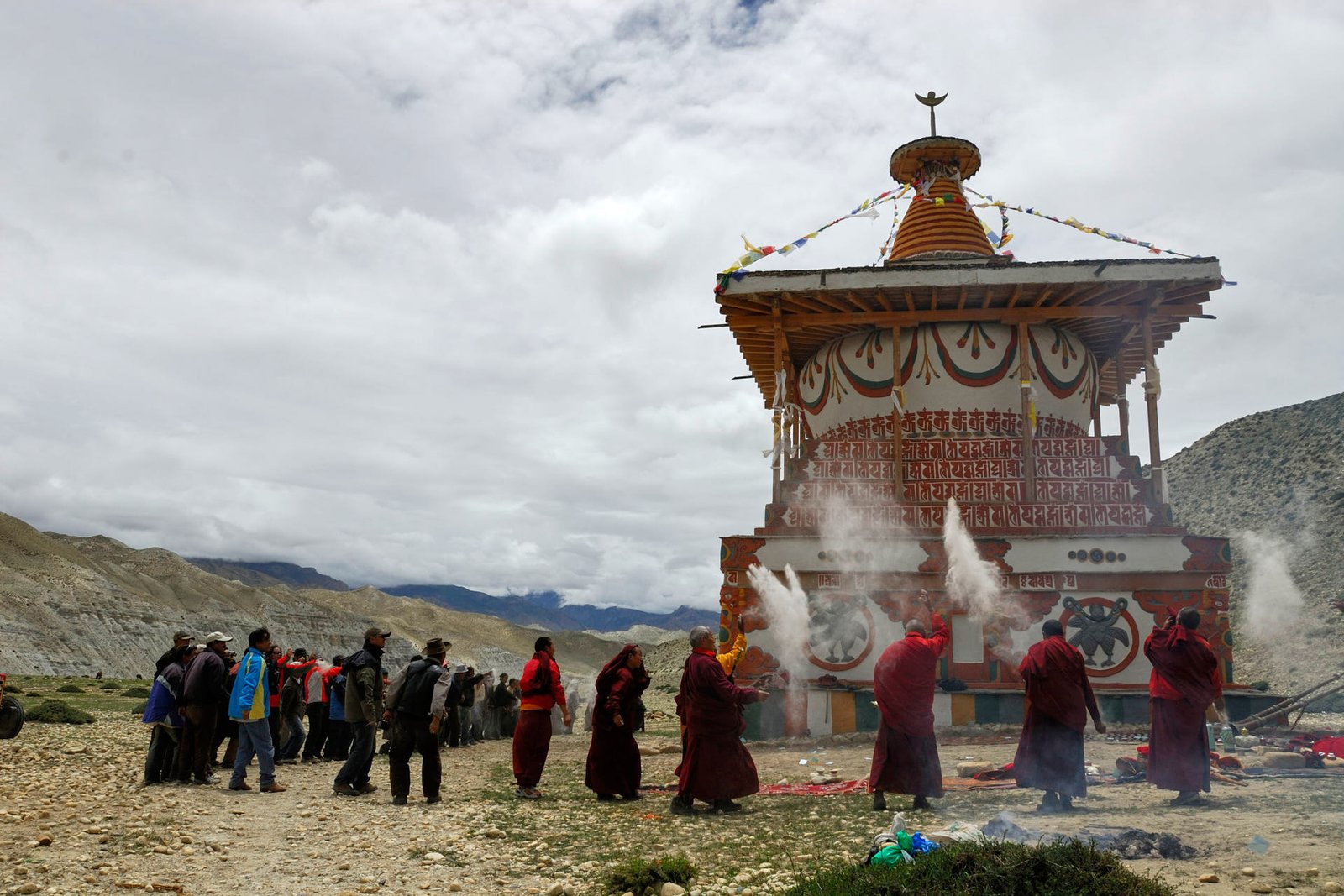the upper section of the chörten was severely damaged by rainfall and most of the stuccowork had been washed away. The dome had lost one section on the south side and a very bad plasterwork was applied in an attempt to fix the problem. Many cracks were present all around the dome and the entrance door on the east side was detached from the main structure so that it was seriously in risk of falling down. Several layers of plaster, applied during the centuries, thickened and covered the original stuccowork in such a way that it was difficult to distinguish any pattern. The embossed Sanskrit writings below the dome were all covered by mud and a large portion had been washed away. The basement of the chörten would host two high relief mirror images on each side and only some traces were left together with a complex stuccowork in Newari style.
the first operation to be carried out was the removal of all clay leakages from the ceiling together with the new plasters applied by the local carpenters during the architectural restoration in 2004. Only the original surface and the original stuccowork were preserved while everything that was added later, be it an over coating or a plaster, was completely removed. Spatulas, trowels and hard brushes were used according to the complexity of the stuccowork that had to be cleaned. This operation unveiled the original stuccowork in all his beauty.
it was decided to reconstruct all the stuccowork that was lost following the requests of Lo Manthang villagers and monks. Since there was enough stucco left, it was possible to cope with the reconstruction of the missing elements. All the remaining stucco was copied and used to recreate the lost parts. Lifesize drawings of the elements to be reconstructed were drawn and then, following the original technique of execution, short wooden bits were inserted in the areas to be plastered, so as to give strength and adhesion to the stuccowork. The surface was previously wet with a PVA binder solution to enhance adhesion between the layers. The plaster was then applied according to the thickness of the original stucco to be imitated. Then a stencil was laid over the plaster and yellow pigment was pounced to mark the shape to be cut. The excess of plaster was cut out using sharp spatulas and surgical knives so as to leave the carved stucco. During the process of drying up, the new stuccowork was wet with a solution of PVA binder and clay in water for preventing or removing any cracking from the surface.
the consolidation work, natural pigments used to paint the chörten were found inside the dome and on the roof. Traces of colors were still visible on the surface of the building as well. Even though it was not possible to prove that they were the original colors from the construction period, especially after having found so many layers of over paintings, the monks allowed us to use them to paint the chörten. The pigments were mixed with a solution of an acrylic binder and the colours were applied by brush.

